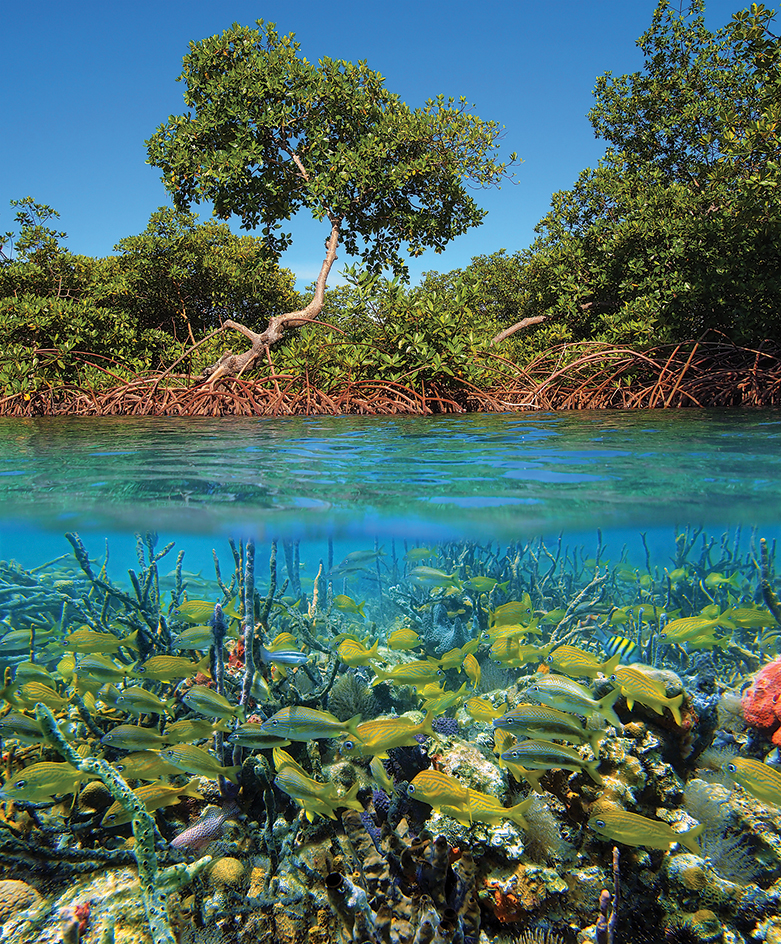Mangrove forest, or mangrove swamp, is an area with a dense growth of mangrove trees. These forests fringe more than half of all tropical shores. In some places, the trees are no bigger than bushes. In others they grow from 100 to 130 feet (30 to 40 meters) high. They often grow in shallow water or mud. Mangrove forests protect coastal areas from the full force of storm waves. They also act as a filter by trapping pollutants washed down from the land.

Mangrove forests provide food and shelter for a wide range of animals. These animals include fiddler crabs, mudskippers, herons and kingfishers, mangrove snakes, and monkeys. The mangroves of India and Bangladesh provide shelter for the rare Bengal tiger.

Mangrove wood is used by people for building and fuel. Mangrove leaves are used as thatch and the bark is used to tan leather. Cellulose from mangrove wood is used to make rayon, a synthetic material. The wood is also used to make paper.
Mangrove forests are a breeding place for many fish. Food from the forests is also washed down by rivers to fish and shrimp living offshore. In some areas, people have created ponds in the forests for rearing fish, shrimp, and shellfish such as oysters. Other fish reared in such ponds include milkfish, groupers, and mullet. In Indonesia, milkfish have been farmed in mangroves since the 1400’s. The ponds are also important in the Philippines and Taiwan.
Mangrove forests are being cut down for their wood and to make room for buildings and crops such as rice. They are also being damaged by pollution. The state of Sabah in Borneo has lost about 40 percent of its mangroves, mainly to the Japanese woodchip industry. In southern Queensland, Australia, large areas of mangroves have been destroyed to build houses and canals. In west Africa, mangroves have been cleared for rice cultivation. In Puerto Rico, the refuse from mining activities has smothered large areas of mangroves.
See also Sundarbans .
